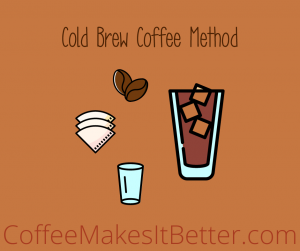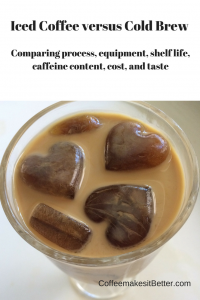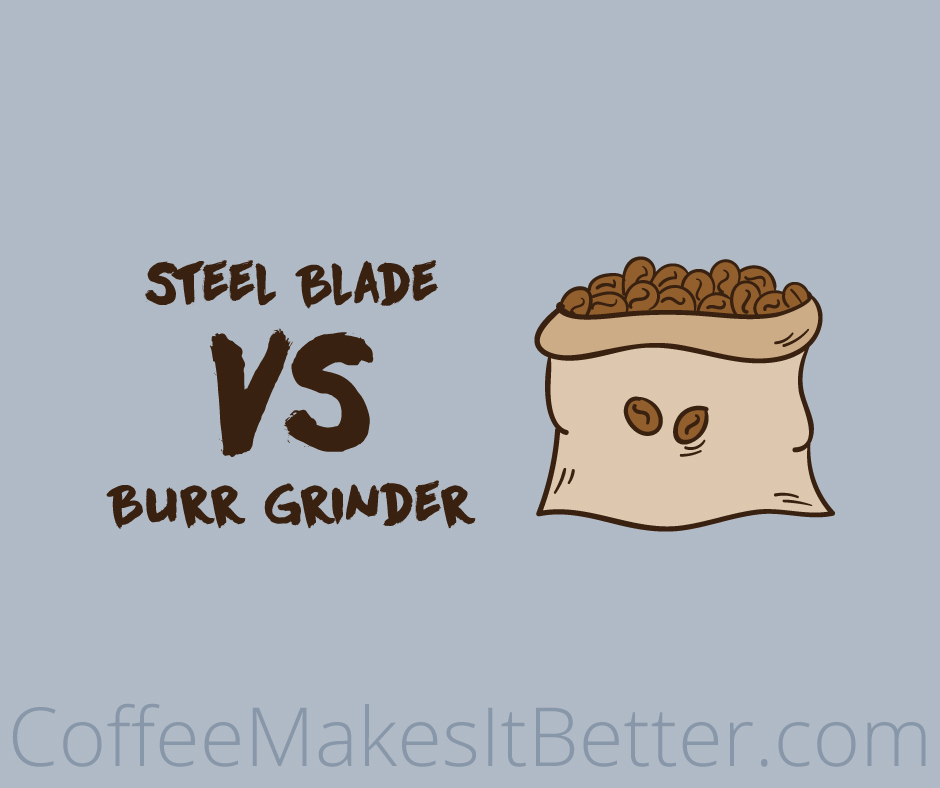As the temperature rises, like many people, I reach for cold coffee.
Not all cold coffee is created equally.
Below is a comparison of traditional iced coffee versus cold brew method. Where we compare the process, equipment, shelf life, caffeine content, cost, and taste.
Iced Coffee Process
Iced Coffee is made by simply brewing hot coffee and then serving it cold. You can deliberately brew the coffee stronger by using less water, allow it to cool off for a few hours or overnight, add ice and serve. Any leftover hot cold can be removed from heat, allowed to cool off, then served cold hours later. Another option is to brew a stronger batch than normal immediately ice and serve.
1 cup of ground coffee will make 8 cups of traditional hot drip coffee.
Iced Coffee Equipment

Drip Coffee method
There is no additional equipment to purchase, use your regular drip coffee maker, Chemex, pour over, or French Press to brew your favorite coffee. I usually transfer my coffee into a glass jar, let it cool off to room temperature, then stick it in the refrigerator until I am ready for it. It is easy, and a great way to ensure that not a single drop of coffee ever goes to waste.
Iced Coffee Flavor
To minimize any bitter aftertaste, remove the coffee from any heat source and start cooling as quickly as possible after brewing for the best cup of iced coffee.
Iced Coffee Shelf life
Iced coffee is best the fresher it is. Any iced coffee older than 36 hours gets thrown out in our house. This rarely occurs, but occasionally I forget there is iced coffee in the fridge or I am craving a cup of hot coffee to start my day and I brew a fresh pot.

Cold Brew Process
Cold brew is the process of making concentrated coffee without using heat. This process is a 5-minute setup and up to a full day lead time before your coffee is ready. It requires a little bit of planning and is worth the wait!
Cold brew is usually 2 cups of ground coffee to 3 cups cold water for the concentrate. Depending on strength preference, those 2 cups of ground coffee will make 6-9 cups of diluted cold brew coffee.
Cold Brew Equipment
Cold brew equipment involves a one or two step filter process (depending on the exact model or process used). Filtered water is poured over the coffee grounds to produce a strong concentrate coffee. The coffee grounds steep (also referred to as brew) in cold or room temperature water for 12-24 hours. The coffee is filtered from the used grounds into a new storage container. Before serving, dilute 1 part of the coffee concentrate with 1 or 2 parts water, depending on brew method and taste preference.

Cold Brew Coffee Method
I start with a full cup of ice, then blend even parts of coffee concentrate and water. As the ice melts the coffee stays cold and strong to the last sip.
Cold Brew Flavor
Cold brew brings out the very best flavor of your coffee. Even a mid-tier coffee tastes better when prepared by cold brew. Premium coffee is the very best when prepared in the cold brew method over icing hot brewed coffee.
Cold brew stays fresh and tasty well beyond a week and is rumored to retain the high-quality flavor up to 2 weeks. Our cold brew never lasts an entire week, it is too delicious not to drink it all!
Cold brew uses twice as much ground coffee for the same end result, so cold brew is effectively twice as expensive as a traditional hot brew. Try it for yourself to decide if cold brew is twice as good to justify the double price. I certainly think it is worth it, especially if I am making my cold brew at home with premium 100% Arabica single source beans.
Caffeine and Acidity
Cold brew contains about 30% less caffeine than traditional hot brewed coffee, all other variables being equal. And cold brew has a lower acidity (over 60% less acidic) than hot brewed coffee.
For people suffering from ulcers, IBS, ulcerative colitis, gastritis, peptic ulcers, or Crohn’s disease usually report that coffee irritates their digestive system and makes their existing stomach/digestive problems worse. Many have reported being able to reintroduce coffee back into their diet by switching to 100% Arabica bean coffee prepared in the cold brew method. While this is no way serves as medical advice, it may be the low acidic coffee option you have been searching for.
 Final Thoughts
Final Thoughts
Iced coffee is a great way to ensure that you do not waste good coffee.
Cold brew coffee is the more expensive, less acidic, longer shelf life brewing method.




